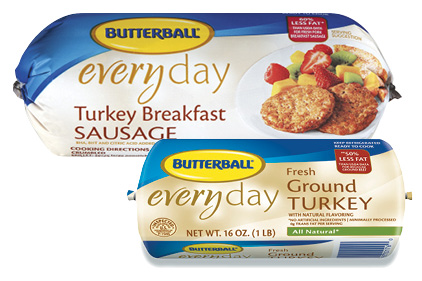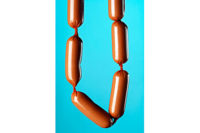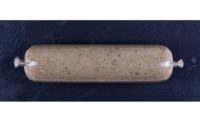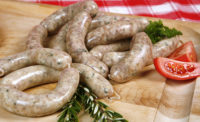Chubs: What’s ‘old’ is … spot-on relevant


|
A case in point is chub packaging. Believe it or not, more and more chub packages are showing up in retail meat cases. Who knew? Chubs of ground beef have been around longer than laptops … a point of reference, by the way, appreciated by an alarmingly large segment of our population.
But, it is an old package that still delivers, satisfying the needs of processors, retailers and consumers alike. And now, with most shoppers’ purses lighter than they used to be, chubs look even better because they are often the vehicle of choice for ground beef features at retail.
Since 2007, the use of chub packages for ground beef increased from 28 percent of ground-beef packages to 35 percent in 2010. During that same period, the use of modified-atmosphere packages for ground beef fell from 35 percent to 25 percent, according to the 2010 National Meat Case Study, a retail meat case audit that provides information about meat merchandising trends and was funded by Sealed Air’s Cryovac Food Packaging, The Beef Checkoff Program, and the National Pork Board.
A couple of points to consider about chubs’ “renewed” popularity are their production efficiency and retail appeal. Think of having your cake and eating it too.
It is all about controlling costs in ground beef and ground poultry production, and you would be hard-pressed to find a more cost-effective way to produce packages of ground product. Production line speeds commonly exceed 100 packages per minute for chubs that can carry striking eight- to 10-color printed graphics that not only stand out in any meat case, but also speak loudly to price-conscious shoppers looking to stretch their meal dollars. Think tacos, spaghetti sauce and chili, to name some favorites.
Improvements to the package have been developed and are available, but they come with increased costs — one reason they have not found traction in North America. Three years of hard economic times have amplified chub packaging’s production efficiencies, and any discussion of added costs would seem to be a non-starter with processors.
However, according to packaging industry sources, in Asia there is some use of ultra-sonic sealing with mono-layer Saran films for chub sausage products. The stated advantage is superior package seals even through contaminants, but the process slows production line speeds and adds to packaging costs, according to those same sources.
So, is what’s old new again? No, even better, what’s old is still spot-on relevant to a marketplace demanding more cost-effectiveness, performance and value at every stage of distribution. Forget the age. Remember the result.
Looking for a reprint of this article?
From high-res PDFs to custom plaques, order your copy today!







